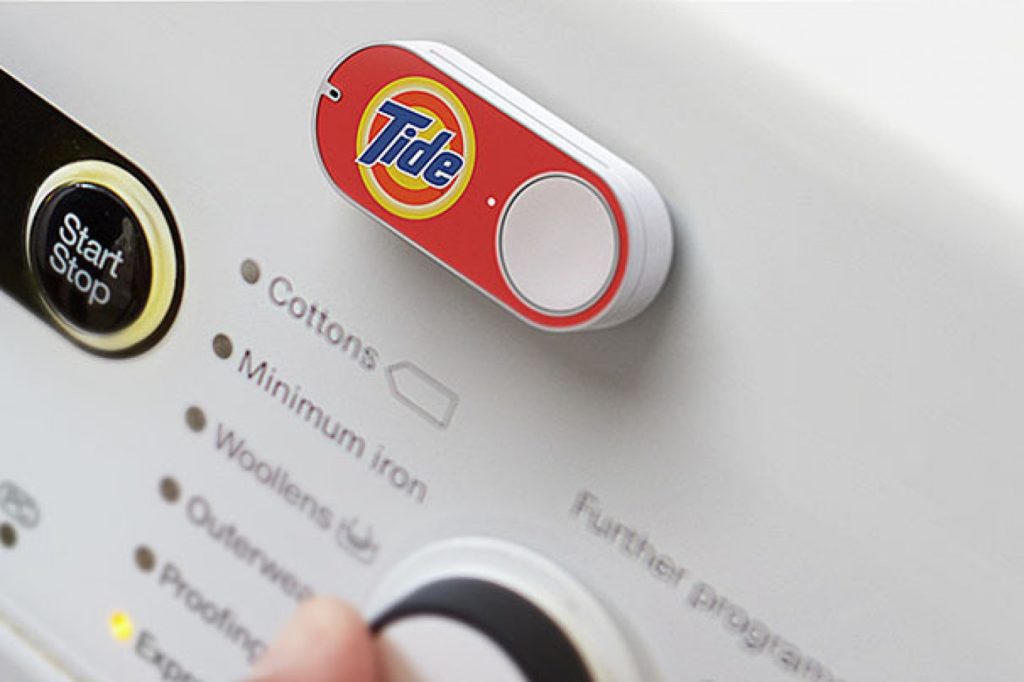“Never worry about running out again…” reads a quote on the Amazon dash button website.
We’ve all been there—running out of shampoo while in the shower, or realizing that you forgot one item on your grocery list. With the Internet of Things (IoT) order buttons, that might be a thing of the past.
Amazon pioneered the Amazon Dash Buttons in 2015; a Wi-Fi enabled device used for reordering products with the press of a button. The button allows Amazon Prime users to quickly and conveniently reorder everyday household products within the comfort of their homes.

Image source: Amazon website
While Gartner predicts that by 2018, retailers engaged IoT partnerships with major manufacturers will gain a significant market share from competitors, it’s still unclear if IoT order buttons will cause a direct increase in demand at the initial stages.
In a recent Gartner research study titled “Get Ready for IoT Order Buttons in Supply Chain Planning and S&OP” early findings and recommendations for supply chain executives included:
- Uncertainty: The Impact of IoT buttons on Supply Chain Processes is unclear
While IoT buttons are predicted to create a better customer experience, easier access to order history which could affect demand and forecasting decisions, the adaptability of IoT buttons both on the customer and manufacturing side is in the infant stages. Hence, data visibility and change that should be anticipated might not be evident until a few years down the line when adoption becomes more wide stream.
Read Also: 2016 Supply Chain Insights Summit: Imagining Supply Chain in 2030 as The Engine of Growth
- Omnichannel Benefit: Shift in Channels instead of an increase in repeat orders
Manufacturers who may have been looking at IoT buttons as an extra revenue stream may need to adjust their expectations, at least at the initial stages. Per the research conducted by Gartner, manufacturers did not see an immediate increase in demand. Instead, the IoT buttons provide an alternative channel for placing purchase orders. The argument can be made that once again; this could be because of the early adoption rates. Even if IoT buttons don’t increase demand, they may improve demand predictability because of the frequency and accessibility for order placement.
Related: Winning the Debate on Selecting a “Best of Breed” Supply Chain Solution.
- Product Choices Make a Difference: Choose High-Volume Products
An emerging best practice recommended by Gartner was for manufacturers to “choose low variability, high-volume products with well-defined fulfillment pathways.” The success of a manufacturer’s IoT button is largely dependent on high service levels and availability. For this reason, it’s essential that manufacturers looking to adopt this channel to do so carefully, selecting products that already have established high-volume service levels.
With the press of a button, you could have your grocery items on your grocery list ordered and ready to be delivered in a matter of days. IoT order buttons are at the beginning of the tipping scale in technological changes with the Internet of Things that is yet to come. Manufacturers committed to gaining a competitive advantage with innovation recognize the need to embrace the inevitable shift in customer buying behavior and demand patterns. And while today these manufacturers may be looked at as pioneers or early adopters, the IoT revolution is imminent.






